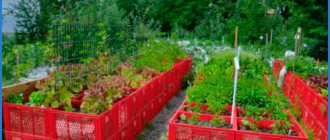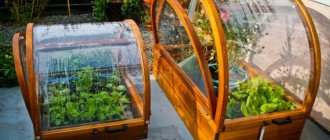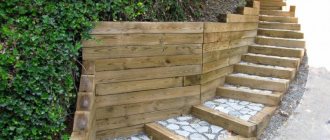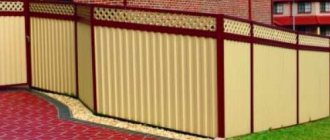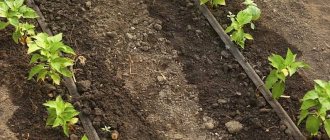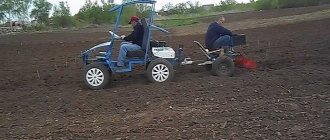When caring for your garden, weed control is one of your top priorities. And this is really important because weeds literally steal nutrients, water and sunlight from your crops.
Gardeners and gardeners, in principle, do not have to spend a long time proving the harm of weeds. The more there are, the worse it is for cultivated plants, this is clear to everyone. But sometimes the fight against unwanted vegetation turns into a real punishment. Let's look at a few techniques that can make the task easier.
What is a smart garden or smart beds
A smart vegetable garden allows you to obtain maximum yields with minimal labor costs. How? There are several basic rules and techniques: proper planning of plantings, rotation of planted plants, special growing technologies (in high beds, trenches), drip irrigation, mulching or the use of covering material. All this has been known for a long time and, probably, is already used by many. But it is precisely in combination that all these measures give what is called a “smart garden”. Because everything on the site is done wisely.
A smart vegetable garden is formed, often raised or high beds, in which the necessary conditions for plant growth are created
The main task of this technology is to make sure that working in the dacha is not a burden. This is possible if you approach the organization of the process wisely. And it’s completely in vain that this technology is called “a garden for the lazy.” At the stage of arrangement you will have to work hard, but then everything will grow almost on its own, but the first stage requires hard efforts.
It’s worth starting with site planning. It is necessary to choose the location of the beds taking into account the lighting. Then develop a scheme for laying water pipes along the section and lay them. At the same time, you can build beds. Roughly in that order. All this requires time, significant effort and money. Material costs may not be too large.
Original options for high ridges
Having understood the principle of assembling a simple rectangular structure, it can be modernized in a way that suits you. It all depends on desire and imagination. Wood is such a “flexible” material that with its help, hardworking owners of their gardens and summer cottages create real masterpieces of design art.
Here are just a few examples with photographs:
Pyramid bed
Excellent for growing strawberries, spicy and medicinal herbs when there is a shortage of space, creating multi-tiered flower beds or an alpine slide
Fence bed
An ideal option for zoning the territory. Instead of a classic fence, you get additional places for planting or flower beds
Bed-wall
Allows you to increase the usable area of the site and decorate the blank walls of buildings
Compositions from non-standard shapes
Nobody forces boxes to be strictly rectangular or square - trapezoids, polygons, and circles have a place on the site
Beds-benches for a recreation area
If you want to relax on a comfortable bench, admire the flowers and enjoy the harvest at the same time, combine a classic bench with equally classic box beds
Another example of a bed-bench
Planning a vegetable garden
If you already have a summer house or a plot of land near your house, you have probably already encountered a situation of an overabundance of fruits, vegetables and berries. When the harvest has to be distributed to relatives, neighbors, and colleagues. But in order to grow it, a lot of effort had to be made. To avoid such a situation, it is necessary to plan the harvest. It’s clear that you won’t get great accuracy, but results close to the planned ones are possible.
A smart vegetable garden is also a decoration of the site
We count the area of the beds
The first thing to do is sit down and think about what and how much you want to grow. The specific quantity is in kilograms. How much do you need to “eat” and “close”. Write a list of plants (in a column) and the desired harvest.
Having decided on the list of plants that you want to grow in your home, we sit down and look at the average yield that can be achieved when grown in smart beds. It is given in the table. Since you are still an inexperienced “lazy gardener”, reduce it by half. We put numbers next to each of the plants. It must be recorded in kilograms per square meter of area.
Approximate yield of vegetables and herbs when grown in smart beds
Now it’s easy to calculate how much area you need to allocate for each type of plant: divide the desired yield in kilograms by the average yield for each type of plant. We get the square footage for vegetables, berries, herbs, etc. If we add up all these areas, we will find out how many beds you need in total. These are the beds that should be placed on your site.
You're probably surprised by how little space you need for garden beds. And it's really not enough. Many times less than what we are used to! You will have very little land to cultivate. The freed up space can be used for flower beds, rockeries, fountains and other decorations.
Where to place
When planning smart beds, you need to take into account the degree of illumination. Almost all the plants you need prefer sunny places. In partial shade you can grow rhubarb, sorrel, and onions (including feathers). Perhaps that's all. There are no garden plants that grow well in shaded areas. Or rather, they will grow, but the yield will decrease by 3-4 times. Shaded areas should be set aside as a recreation area or a flower bed with shade-loving plants should be placed there.
Layout of beds: only in the sun
Another principle for placing beds: the more care (read watering) a crop requires, the closer to the entrance to the house it should be located:
- There should be a greenhouse with seedlings right next to the exit.
- Nearby there is a bed for radishes and salad.
- Right there or a little further - tomatoes, cucumbers, greens.
- Even further - peppers, eggplants, cabbage of various types, beans, root vegetables.
- In the back there are potatoes, pumpkins, squash, corn, sunflowers and perennials.
- The farthest thing is the garden.
Beds with capricious plants are located as close to the house as possible
Why arrange the plants this way? Because at the beginning of the watering/weeding work, gardeners are full of enthusiasm and the plants receive more water, weeds are removed more thoroughly. Gradually, the fervor subsides, less and less water is available per square area, and processing becomes less thorough. And with the approach proposed above, the amount of water will be “just right” and everything will be fine with soil cultivation.
Orientation to cardinal directions and precise location determination
If you want to get a harvest from the entire area of the lazy bed, the location is north-south. Strictly. This is the only way the entire area will bear fruit. Also place trellises for climbing vegetables. Although, they can be planted along the southern and eastern walls of buildings.
For a smart garden to also be beautiful, you need to think about where to place the beds. To do this, take a scale plan of the site indicating the direction to north/south. On it we draw all the buildings and main paths, water supply (we pay special attention to the position of the taps), trees and shrubs. On the plan we immediately outline the shadow zones - we will not place vegetables here, this is a place for flowers, gazebos, fountains.
One of the beds for a smart vegetable garden: a high bed
We cut out the beds from paper (on the same scale as the site plan). Moreover, we make them in the shape that we plan: rectangle, square, circle, triangle, etc. The shape is selected based on the area planned for the crop. And it doesn’t have to be a boring rectangle. Since there will be enough free space (you remember that you need much less beds), rationalism fades into the background, and the main emphasis is on aesthetics. After all, few people work in their dachas “so that they have something to eat”; mostly it’s also a pleasure. And what could be more pleasant than the beauty of a cultivated plot?
So, we sign each piece of paper indicating a smart bed - we put the name of the crop or crops (you can grow two, three or more on one bed). Now we are looking for a place for each, taking into account the rules described above. Along the way, you can change the shape of smart beds: for the sake of beauty or convenience. When you have found the places, trace the contours and transfer the inscriptions. All that remains is to implement our plans.
Dimensions
There are no strict recommendations on this matter, and there cannot be: the conditions in the country are very different, and so are the people. There are sizes that many consider optimal.
On one site there are very high beds and not very...
So, the dimensions of the raised beds are:
- Height - from 20 cm to 50-60 cm. Look here what a difficult task it turns out to be. The higher the bed is raised, the easier it is to process - less bending. But more land and all the other “fillings” will be required. One more point: if a small bed may be covered with snow and will be covered from severe frosts, then a tall one will freeze through: the sides will also be open. For those beds where annuals are sown, this does not play any role, but for perennial strawberries, let’s say, this is a problem. Therefore, the height is chosen based on these considerations. According to the experience of many summer residents, the optimal height for strawberries is 20 cm. Then you can hope that it will not freeze.
- Width - from 60 cm to 1.2 m. Choose a distance so that it is convenient for you to cultivate the bed. A distance of 60-70 cm is chosen if the approach to the bed is only from one side. If you can reach it from both sides, you can make it a meter or more. It is important that the middle is processed without much stress.
- Length. Here everyone chooses based on the configuration of the site or their desire. There are no recommendations at all.
To prevent the bed from being too high, part of it can be buried: bury it 20-30 cm, and then put walls on top. The removed soil will be used for backfilling (there is often simply not enough soil), and the substrate from the lower coarse layers can be made thicker. And to minimize the cost of maintaining such a bed, you can use drip irrigation.
Irrigation system
A significant part of gardening work is watering the plants. If you use lazy beds, you will have to water much less often. But even in this case, it is better to route the pipes around the area correctly. You already have a plan for the location of the beds in your garden. Now add flower beds, bushes and trees. Get a plan for the placement of plants that need to be watered. Now you should think about how to lay water pipes in the garden so that any “irrigation object” is no more than 2-3 meters away. If you do this, then you will have to pull a small hose to each bed, which is much simpler.
Homemade drip irrigation system made of polymer pipes, water source - barrel
It’s even better if a hose for drip irrigation is installed in the smart garden bed. This will reduce water consumption and increase yield. Yes, at the same time. A drip irrigation hose is a polyethylene tube with small holes through which water drips drop by drop. When planting, plants are planted next to the holes. As a result, water is supplied to the root, the plant receives a sufficient amount of moisture, and the spaces between plants remain only slightly moist (due to the redistribution of moisture in the soil).
When using drip irrigation, you will have very little work. You open the tap, wait a certain period of time, close the tap. All. Hoses for drip irrigation are available for connection to a water supply (sold by the meter), and are available in the form of kits with a small pump that will pump water from the container. The price range for hoses for drip irrigation is significant - prices differ significantly. No matter how limited your finances are, don't buy the cheapest hoses - they won't last more than one season. It’s better to pay a little more for a quality product and use it for several years. When choosing kits for drip irrigation, you must also consider the area to be irrigated. But, most likely, it will suit you, since lazy beds are rarely large. Read more about drip irrigation kits and manufacturers here.
Include row-spacing with crops in your plan
When planning beds for the season, pay attention to sowing cultivated plants between rows to compete with weeds and reduce the supply of weed seeds in the soil.
This constant practice (at least three years in a row) will be especially useful for controlling perennial weeds.
You can choose companion flowers, such as nasturtium for cucumbers or alyssum for potatoes, or plant universal “cleaning” crops such as turnips, sugar beets or potatoes. It has been noticed that planting leeks and celery together also leaves virtually no chance for weeds.
How to make smart/lazy beds
The principle of constructing smart/lazy beds is that you need to create ideal conditions for the development of plants and ease of processing for yourself. What do plants need? Nutrients, enough light, air, moisture and not a lot of weeds.
Nutrients are added to smart beds when planting
Oxygen and nutrients
We provided them with a sufficient amount of sun by arranging the beds from north to south. The next task is to provide nutrients and air to the roots. We lay all this when forming the beds. Depending on the type of soil, we select components that are missing in the “source material”. In Central Russia, the main soils are clay and loam, so humus of varying degrees of “maturity” (one, two and three years) is usually added. This is both for fertilizing and for lightening the soil - for better access of oxygen to the roots. Along with humus, bacteria and worms enter, which continue processing, enriching the soil and loosening it for you.
The yield per square meter will be wow...
If necessary, you can add other fertilizers - into the holes when planting or when watering. Depends on the crops or the richness/poorness of the source soils. The most common natural fertilizers are chicken manure and cow manure, and ash. If you apply only cow manure, mole crickets will annoy you. If you add a little chicken manure, there will be no mole crickets and the soil composition will become richer.
Moisture retention and weed control
Some of the moisture will be supplied by rain and dew, and some will have to be added by irrigation. And so that less water is required, fill the entire space of the bed that is not filled with plants with mulch. Mulch, by the way, also reduces the number of weeds - there is not enough light for them under it.
Straw, mown grass, sawdust, fallen pine needles, and special mulch made from wood chips can be used as mulch. All this can be used to mulch lazy beds. But all materials are imperfect. Here are their advantages and disadvantages:
- Straw rots quickly. On the one hand, it’s good to enrich the soil, on the other hand, you have to update it about once a month.
- Grass clippings and plant debris. The drawback is the same - they rot quickly, but still look “not very good”. In addition, only grass that does not contain seeds or “sores” is suitable, otherwise you will have wild shoots of fresh grass and a lot of problems with diseases.
It is necessary to protect the soil from drying out (mulching) and protect it from weeds. - Sawdust. Large ones are more suitable - they look better. It is not recommended to use fresh sawdust, as it acidifies the soil. It is necessary to mulch for two or three years (put them in a pile and store them).
- Burnt needles. Great mulch. It looks beautiful, does not rot for a long time, and contains a lot of bacteria and fungi that are beneficial to the soil.
- Wood mulch. It is obtained by processing branches and trunks of young trees. This is an excellent material for mulching the garden, but if you buy it, it will be expensive. But you can do it yourself. You probably have trees, bushes, vines. After pruning, you have to come up with something with the trimmed branches. With a garden wood chipper, you solve this problem and also provide your lazy garden with first-class mulch.
There is another good solution: cover smart/lazy beds with a special black covering material. They completely cover the surface of the beds, sometimes in two layers. Small holes are made under the plants. Watering is carried out directly on the material - it does not retain water and air, does not allow weeds to grow, and protects the soil from overheating. In general, it’s good for everyone, except that you have to buy it.
How to make them
We’ve sorted out the general principles of creating a smart vegetable garden, now let’s look specifically at how to make beds. You cannot walk on them, so they must be fenced - with stones, slate, iron, logs cut in half, boards... It doesn’t matter what, but the beds must be separated from the paths. And since you cannot step on the beds, their width should be such that you can freely cultivate the soil.
Now about the width of smart beds. It depends on the type: will they be of normal height or raised. If the beds are made at ground level, their width is 80-100 cm. You can work this width while squatting or bending over. If the beds are raised at least half a meter, it will be even more convenient to work. They make not only high beds. You can use all possible growing technologies:
- Container beds. Their parameters: width up to 1 meter, height - 30-40 cm or 70-80 cm, length - any. Fences can be made of any material.
- Box-bed. Indispensable for northern regions, since the soil warms up faster in a box bed. It has a smaller height - 15-20 cm, width 100-120 cm. Plants can be planted in any direction - along or across (but the rows must be placed from north to south).
- Narrow beds. The width of the beds is up to 0.5 meters, the row spacing is 1 m. They can be at ground level, but the row spacing must be allocated. Vegetables are planted in two rows in a checkerboard pattern.
Productivity when grown in narrow beds - Beds in a barrel. These are especially good for climbing plants: cucumbers, zucchini, pumpkins.
- Beds-pits and ditches.
- Vertical.
Now let’s talk about whether regular height beds are better or raised ones. For a really lazy garden, raised ones are better: when cultivating the soil you will have to strain less. But setting up raised beds is a troublesome and slow task. So, to begin with, you can acquire high beds only for the most difficult to maintain crops. You can also use various containers/containers - for herbs, salads, herbs. Large barrels and boxes sawn lengthwise are suitable. There are plastic containers on sale that are produced specifically for smart gardening. They can generally be placed on paths, near the entrance to the house.
The only crop that should not be grown in raised beds is potatoes. It grows well in trenches, and making them is much easier and faster.
Between the beds
The beds in the smart garden are separated, the distance between them is at least 60 cm (preferably 90-100 cm or more). A significant gap that needs to be filled with something. Weeding between beds is not a good idea. Why then bother with separate beds in order to fight the weeds between them... Therefore, you can either lay out/pave the paths or sow them with lawn grass. The best grass for our lawn is bluegrass and bentgrass. They grow quickly, form dense greenery that does not get trampled and can even withstand cart handling.
To avoid weeding the space between the beds, you can sow it with lawn grass. And beautiful, and no dirt
The grass will need to be cut, so you will need a lawn mower or trimmer. And the cut grass can be used for mulch. Then, by the way, the weeds will come out - they cannot withstand frequent cutting.
Advantages and disadvantages of the material
When creating board borders, fences, flower beds, box beds and other structures necessary on the site, summer residents note a number of advantages:
- Easy to assemble using available tools . Old fence boards, scraps from construction, and wooden window/door frames left over after replacing the windows with modern plastic ones will be used as a basis.
- No restrictions in choosing shape, size and height. Using an ordinary hand hacksaw or jigsaw, it is easy to cut rectangular, oval, and round sections and assemble multi-level or multi-tiered structures. The tree holds its shape perfectly without breaking or sagging under the weight of the soil.
- Possibility of painting and repainting. Varnish, stain, and paint adhere perfectly to wooden boards. If desired, they can be repainted at least every season, adding variety to the design of the site.
- Transformation options. The beds can be easily disassembled and assembled using a screwdriver; from the same boards you can assemble fences of different sizes and shapes, lengthen, shorten or expand unsuccessful buildings.
- Mobility and compactness. Wooden fences of flower beds and flower beds can be easily moved to another place, disassembled for the winter and stored in a barn or garage. When disassembled, a set of boards and posts takes up less space than a bicycle.
- Suitable for all plants. Box beds are universal for different plantings. Both carrots, with their powerful root system, and strawberries, whose roots do not go deeper than 15 cm, grow well in wooden boxes. The main thing is to choose the right size and height, taking into account the needs of individual crops.
- Cheap and accessible. Any boards are suitable for work: old, slab, and unedged. They are easy to purchase at any construction market. Compared to metal, plastic or slate, wood is the cheapest building material.
A compact berry plantation can be conveniently placed in the yard, on the terrace or on the balcony
Despite its significant advantages, wood, like any other material, has its own characteristics and limitations. disadvantages in using boards for making beds are:
- ability to absorb moisture. When in contact with wet soil, wood absorbs water, swells and begins to rot, which provokes the development of mold and other fungi and pathogenic microorganisms;
- short service life. Compared to the 50-year service life of slate beds and the 20-year service life of plastic and metal, wooden beds become unusable within 5-10 years. But it’s also easier to replace them - take the old ones apart and put them in the oven, and put new ones in their place;
- exposure to weathering. Not only rain and snow, but also the sun provokes the destruction of wood. Untreated wood may become gray and cracked within a year;
- the ability to turn into a “cozy home” for wintering pathogens and pests of cultivated plants.
Almost all of the listed shortcomings can be corrected by proper preparation of the boards. With the help of impregnation, varnish, and paint, the service life of wood can be doubled.
Some tricks
The technology is called smart gardening for a reason. You can test different approaches, new products, and the experience of “colleagues.” There are several tricks that come with use. We have already talked about one - about covering material. It really makes maintenance a lot easier and there is no need for mulch. There are other interesting ideas:
- After crops that are “heavy” for the soil, sow oats, peas, mustard, and rapeseed. After a couple of weeks, juicy greenery grows. It can be left “under the snow” and dug up in the spring. Or dig it up just before the snow, along with the greens. The goal here is twofold - the young greenery rots, enriching the earth. This time. And two - weeds do not grow, since the shoots are friendly.
This harvest makes my heart happy - Use white covering material to extend the summer season and get an early harvest. Arcs are made from steel rod with a diameter of 8-10 mm. Drawstrings 2 cm wide or more are sewn into medium or high density spunbond. Arcs are inserted into them, spunbond is assembled on the wire so that the ends of the wire are free. The portable mini-greenhouse is ready. Stick arcs in at both ends of the bed. To protect the plants from frost, straighten the spunbond; you can open it for the day by collecting all the material on one side. The same design will also save you from overheating in the summer heat.
- Place a large metal barrel in the corner of the site. Place weeds and other plant waste in it. To fill with water. The greens will quickly rot and this slurry can be used for feeding. You just need to cover the barrel - the contents don't smell the best.
Surely there are still tricks in processing a smart vegetable garden. If we find out about them, we will definitely update the article.
Freezing compost
During the composting process, the weed seeds contained in it can be stored and then germinate after being applied to the soil. To prevent this from happening, you need to add such organic matter before winter or in early spring, when return frosts are expected.
At the same time, it is important that the seeds do not freeze themselves, but have time to sprout. It is the sprouted sprouts or young shoots that will most quickly die from the cold.
Related article:
Three zodiac signs that will find love in 2022 and three signs that may lose it
